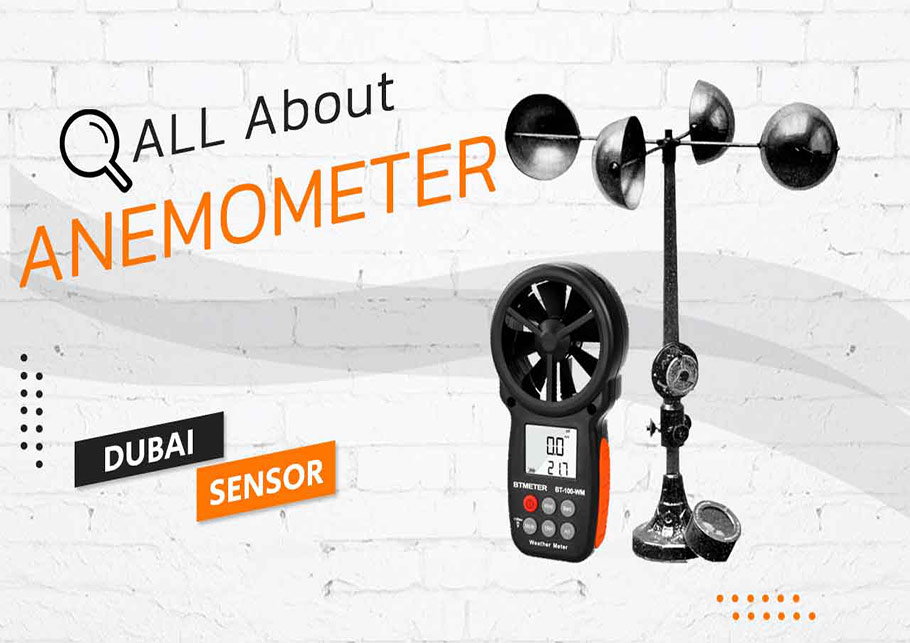Why an Anemometer is Essential for Your Environmental Information Collection
Why an Anemometer is Essential for Your Environmental Information Collection
Blog Article
Anemometers Introduced: Understanding Their Relevance in Ecological Tracking and Precaution
The duty of anemometers in ecological monitoring and precaution is usually taken too lightly, yet their importance is indisputable. These tools have a long history rooted in clinical questions and technical improvements, evolving to come to be essential tools in different fields. From weather forecasting to aviation safety and security, anemometers play a crucial duty in supplying precise information that informs decision-making procedures and improves total security. Understanding the intricacies of anemometers unveils a globe of critical understandings that are fundamental to our understanding of the atmosphere and the actions we take to guarantee safety and security.
History of Anemometers
The advancement of anemometers can be traced back to the ancient civilizations where primary wind gauging tools were first made use of. One of the earliest recognized anemometers was the hemispherical mug anemometer designed by Leon Battista Alberti in the 15th century.
Over the years, innovations in innovation led to the development of more modern-day anemometers, consisting of ultrasonic anemometers and laser Doppler anemometers, supplying boosted precision and performance in determining wind speed and instructions. The background of anemometers showcases an amazing trip of development and progression in the area of weather forecasting.
Kinds Of Anemometers
Throughout the area of weather forecasting, numerous kinds of anemometers have been created to precisely gauge wind rate and direction. Sonic anemometers use ultrasonic signals to measure wind speed and instructions properly. Hot-wire anemometers operate based on the principle that the cooling impact of wind on a heated cord is symmetrical to the wind rate.
Applications in Weather Forecasting
Having discussed the numerous types of anemometers made use of in weather forecasting for gauging wind rate and direction, it is crucial to discover their functional applications in the area. Anemometers play a vital function in weather forecasting by offering exact and real-time data on wind conditions (anemometer). Meteorologists make use of anemometers to keep track of wind speed and instructions to forecast climate patterns, issue cautions for extreme weather events like hurricanes, tornados, and twisters, and assess weather for aviation security
In weather forecasting, anemometers help in recognizing local and regional wind patterns, which are important for forecasting weather condition modifications and figuring out weather trends. These gadgets are also used in study to examine microclimates, metropolitan warmth islands, and air pollution diffusion. Additionally, anemometers are employed in farming to enhance plant monitoring techniques, such as watering and pesticide application, based upon wind conditions.
Importance in Air Travel Safety
An essential aspect of guaranteeing aviation safety and security lies in the precise surveillance of wind conditions making use of anemometers. Anemometers play an important role in air travel by offering real-time information on wind rate and instructions, aiding pilots in making notified choices throughout trip, touchdown, and take-off. Uncertain More hints and strong winds can substantially impact aircraft operations, making it essential for air travel authorities to rely upon exact wind dimensions to guarantee the security of travelers and team.

In the dynamic environment of aeronautics, where even small adjustments in wind speed and instructions can have extensive results, anemometers stand as important tools for promoting secure and secure flight.
Function in Environmental Research Study
Anemometers play an essential duty in ecological study by supplying essential data on wind speed and direction. By precisely gauging wind qualities, anemometers assist scientists analyze the motion of toxins in the air, analyze the impact of industrial discharges, and forecast the spread of contaminants in the atmosphere.


Conclusion
In verdict, anemometers have played a crucial function in ecological monitoring and safety and security procedures. Understanding the significance of anemometers is vital for properly gauging wind speed and direction, which is vital for anticipating weather condition patterns, guaranteeing secure aeronautics operations, and performing environmental studies.
One of the earliest recognized anemometers was the hemispherical cup anemometer created by Leon Battista Alberti in the 15th century. Over the years, advancements in technology led to the advancement of even more contemporary anemometers, including ultrasonic anemometers and laser Doppler anemometers, providing enhanced precision and efficiency in gauging wind rate and direction. Hot-wire anemometers operate based on the concept that the cooling impact of wind on a warmed cable is proportional to the wind speed. Meteorologists utilize anemometers to check wind speed and instructions to forecast weather condition patterns, concern warnings for severe weather occasions like hurricanes, storms, and twisters, and analyze atmospheric conditions for aviation safety and security.
Recognizing the significance of anemometers is necessary for accurately gauging wind rate and instructions, which is important for forecasting weather condition patterns, ensuring risk-free aviation procedures, and performing environmental researches. (anemometer)
Report this page